| Author |
Topic |
|
maryjane
    
7076 Posts
|
 Posted - Apr 17 2016 : 11:41:45 AM Posted - Apr 17 2016 : 11:41:45 AM


|
| What is the legume percentage in your pasture? Roughly. I know you have clover. Do you have any pasture that is mostly grasses? |
MaryJane Butters, author of Milk Cow Kitchen ~ striving for the stoicism of a cow standing in the rain ~ |
 |
|
|
txbikergirl
    
3197 Posts
|
 Posted - Apr 17 2016 : 11:47:15 AM Posted - Apr 17 2016 : 11:47:15 AM


|
it is a very, very small percentage maryjane. we are almost all grasses. we hand broadcast a bit of clover, but not much in the pastures themselves as we wanted to ease into that with the cows on new pasture.
through loverboy's communication with those that know better is that we have less then 10% legumes. so we are probably in the .4-.5% grass pasture calcium ranges, as opposed to the .7% heavy legume. just walking it every day we can see that - almost all grasses. |
_(199x300)_(66x100).jpg?v 93697001) Firefly Hollow Farm , our little farmstead. Farmgirl living in the green piney woods of East Texas on 23 acres with a few jerseys, too many chickens, a pair of pugs and my Texan hubby (aka "lover boy") Firefly Hollow Farm , our little farmstead. Farmgirl living in the green piney woods of East Texas on 23 acres with a few jerseys, too many chickens, a pair of pugs and my Texan hubby (aka "lover boy") |
 |
|
|
maryjane
    
7076 Posts
|
 Posted - Apr 17 2016 : 12:17:34 PM Posted - Apr 17 2016 : 12:17:34 PM


|
I'd posted this on another thread recently from a guy who runs a large raw milk dairy in S. Idaho.
"Many dairy cows may lose weight during the early stages of lactation due to energy requirements even with the best nutrition. If dairy cattle are not given the proper nutrition they need, they can get severely stressed and may be susceptible to infectious and metabolic diseases. Not only will the cow suffer, but also her milk production and quality. For example, ketosis and hypocalcemia are both common and quickly fatal metabolic diseases in dairy cattle that are caused by inadequate nutrition during lactation. Contrary to popular belief, year-round pasture feeding dairy cattle is NOT natural and is not the way dairy cattle have been historically managed. A good quality, high producing dairy cow cannot do well on green pasture alone. Even the best pasture does not contain the nutrition it needs to produce the milk it was bred to produce. Keep in mind that a grass fed dairy in Idaho only has grass available from April-Sept/Oct. Year round pasture feeding of dairy cattle requires the artificial creation of year-round pastures by intensive irrigation that uses high volumes of energy and water ... "
"Tim Boyd, a member of the WAP Foundation, comments on the subject of grassfeeding milking cows, "...[G]rass is very short on Phosphorus and calcium two of the three essential macro nutrients, and is very short on energy (starch) to give fuel to microbes to multiply to digest large amounts of protein. The average cow rations should be in the range of 16.5 percent protein, most grass we feed as pasture is 24 to 27% protein, essentially drowning the microbes in too much protein forcing the cow to starve given nothing or very little gets digested because the microbes have no energy to reproduce even though the cow eats constantly.... The key is to have the balance just right with dairy cows and that is very hard to do with grass, and remember we have the limited up take of calcium and phosphorus as mentioned earlier with grass alone.... WAPF to my knowledge has never promoted 100% grass fed given the two counties in the country that can do it cannot supply the country with products. Grass can be a good thing but it also can be abused and lead to the same results of CAFOs, just killing them with protein and instead of energy." |
MaryJane Butters, author of Milk Cow Kitchen ~ striving for the stoicism of a cow standing in the rain ~ |
 |
|
|
txbikergirl
    
3197 Posts
|
 Posted - Apr 17 2016 : 1:47:32 PM Posted - Apr 17 2016 : 1:47:32 PM


|
maryjane, as usual i soooo appreciate your comments. hugs from texas. i know most people are always hesitant to give anyone advice, but i know we all just give our opinions as to what we would do - and each person has to make their own decision. as i mentioned before, its really like raising children - lots of advice, and we've got to do what is right for us.
i liked that reference material you posted, that's what really gelled in my mind last night and made me really feel good about the realization that i have come to - if you want to keep a cow "all natural on pasture", then keep them natural and don't unnaturally increase their milk supply and unnaturally stress their body. don't mean that to sound like milking itself is unnatural - just that when we create the artificial demand we need to give them the nutrition required to do it.
I loved your analogy you posted about your breastfeeding experience and diet requirements - that's so true, and it resonates with me. that is what is natural. and the cows are experiencing it too.
and your comments are hitting what exactly i felt in my gut for months now. i want to cut out essentially all of the "supplemental" feeding - meaning chaffhaye, dairy grain, minerals, etc... BUT a small treat of the dairy grain isn't going to hurt. that little treat would probably make her day, and honestly will be the only reason she might return from the pasture to the barn!
i am going to keep her on the dry hay, its not alfalfa. from all my reading you need a balance of the dry hay for the proper health of the cow and their fresh pasture. that keeps her munching on something at night in the barn, and eager to get back to pasture each morning as well. i've also increased her barn corral size so she does have access to grasses/pasture mix there too for when i start the 3 day or so confinement for her to calve. |
_(199x300)_(66x100).jpg?v 93697001) Firefly Hollow Farm , our little farmstead. Farmgirl living in the green piney woods of East Texas on 23 acres with a few jerseys, too many chickens, a pair of pugs and my Texan hubby (aka "lover boy") Firefly Hollow Farm , our little farmstead. Farmgirl living in the green piney woods of East Texas on 23 acres with a few jerseys, too many chickens, a pair of pugs and my Texan hubby (aka "lover boy") |
Edited by - txbikergirl on Apr 17 2016 1:51:04 PM |
 |
|
|
Boots&Flipflops
   
499 Posts
Darla
|
 Posted - Aug 10 2018 : 11:19:50 AM Posted - Aug 10 2018 : 11:19:50 AM


|
Hi Everyone,
I am sorry to here about the Milk Fever issues happening to some of you. It is heart breaking.
Thought I would start a Forum for the subject so we can all find the info and share easily. I found this article and find it to be very informative. Lots of other great information on the left side bar as well. I believe the "Unimix" they talk about in prevention is very similar to the drench I gave Lacy as a preventative, and had no issues with milk fever. I used CMPK oral drench. One bottle ASAP after delivery, and then again 12 hours later.
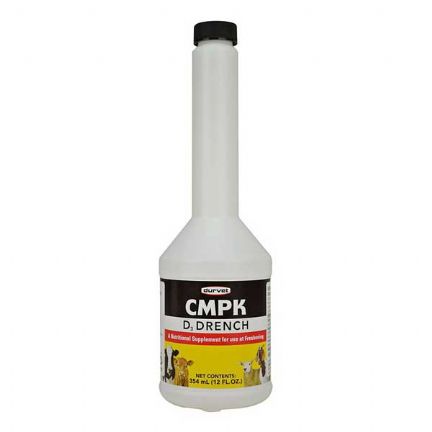
http://agriculture.vic.gov.au/agriculture/pests-diseases-and-weeds/animal-diseases/beef-and-dairy-cows/milk-fever-hypocalcaemia-in-cows |
To Succeed In This Life You Need Three Things: A Backbone, A Wish Bone and a Funny Bone. As quoted by Reba McEntire |
 |
|
|
maryjane
    
7076 Posts
|
 Posted - Aug 13 2018 : 07:48:34 AM Posted - Aug 13 2018 : 07:48:34 AM


|
Miss Daisy's milk fever wasn't at all straight forward. She delivered, was milked, colostrum fed to baby Buttercup (Miss Daisy's teats are too low to the ground for a calf--with her last calf I had to constantly pull its legs out from underneath it and hold it down on its belly so it could reach the teat.) Miss Daisy had eaten a good helping of Chaffhaye, all seemed well. I pulled up an upside down bucket to sit with her and Buttercup to watch for the afterbirth when she started to grind her teeth weirdly (learned since it's a pain response). Connie was getting ready to leave. I said, What do you think Daisy is doing with her teeth? We were looking at her mouth and brainstorming ideas when, Whoa, look at her side!!! She was starting to bloat. As it turns out, when they're low on calcium, their rumen quits contracting (calcium is needed for muscle function). We put her in the squeeze chute and tried unsuccessfully to tube her so I grabbed a laminated diagram/drawing of where to poke a cow I'd put on the parlor wall and Connie, hubby, and I successfully inserted a trocar in her side.
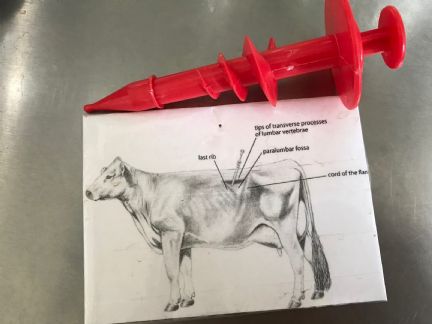
Her stomach went down immediately and she quit grinding her teeth but like Janet said, she was "bad drunk" so I knew we needed to get her to a vet for a calcium IV. Got her to the vet, IV inserted, calcium given (quick blood test also revealed she was low in phosphorous so she got some of that also). She perked up, we brought her home and she was fine for a day. The following day the young first-time vet who'd done the IV called to say she was going to stop by because she probably should have given Daisy antibiotics because of the trocar (the trocar can allow rumen juices to get in between skin and rumen--not a good thing), but it was too late. Daisy already had a systemic, full body infection raging. We had to administer lots of penicillin plus when she was laying on the vet's floor for the IV, she leaked milk on the dirty floor and a staph bug climbed up her teat, so we had to also treat that. Poor girl. In the meantime, our Maggie who'd delivered a week earlier agreed to adopt Daisy's calf and has successfully milked two calves all this time (I plan on weaning them next week--they'll both be 4 months old).
With my births going forward, I'm not going to withdraw alfalfa hay 10 days prior and right after birth she'll get a plug of calcium down the gullet. 12 hours later, she'll get another one. I kinda thought that after all these years, if I'd never had the dreaded milk fever, I must be doing something right with their diet. But no more leaving it to chance for me. I almost lost the cow I've had the longest through thick and thin. She's a super productive cow for her size, giving us 4 gallons every morning! |
MaryJane Butters, author of Milk Cow Kitchen ~ striving for the stoicism of a cow standing in the rain ~ |
 |
|
|
maryjane
    
7076 Posts
|
 Posted - Aug 13 2018 : 09:41:26 AM Posted - Aug 13 2018 : 09:41:26 AM


|
My next births aren't until next spring but this time I'm going to assume any of them could come down with milk fever, rather than the other way around. Here's my prep so far.
A normal/commonly used calcium bolus is designed for large dairy cows and seems about the size of my forearm. I'm sure I couldn't fit one of those down any of my cows.
The Dr. Larson Company recently came up with a smaller bolus (for Jersey cows). It has calcium chloride, calcium propionate, calcium carbonate, and Vitamin D3. The ingredients in this one make the most sense to me. It has 22 grams calcium/bolus. They say the Vitamin D is "necessary for the absorption and metabolism of calcium and phosphorous" (which we know is the case for humans).
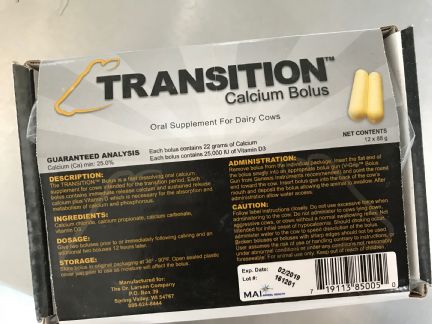
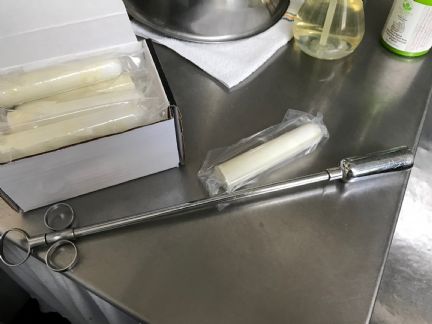
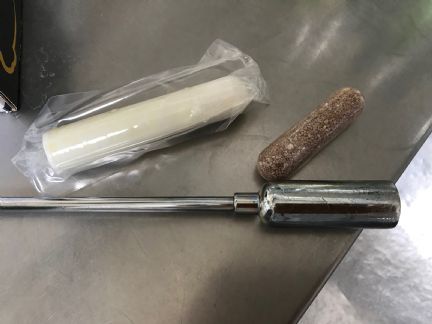
I got really good at giving Anna a bolus of ReaShure (the smaller brown one that is choline) two times per day using a balling gun. These are the size of the bolus and the gun I used. You can see that Dr. Larson's bolus is larger. I think Janet bought the balling gun that fits his bolus, but I haven't done that yet.
This is the gun that came with Dr. Larson's bolus but it can't be used by one person (me anyway) because the trigger to inject it down her throat is so far away.
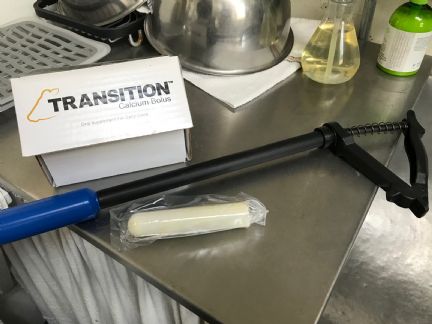
For an oral drench I purchased a 400 ml drench gun. I'm going to look into an oral drench I can put into it. I like a fair amount of calcium propionate in the mix and Vit. D. Perhaps CMPK or Unimix--haven't finished researching liquid mixes yet. For that matter, WSU gave me some powdered calcium propionate I could mix with water and give to her.
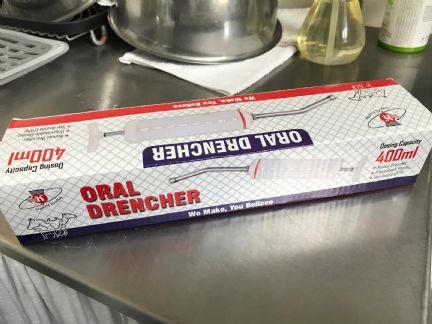
I also have some Van Beek CalCaps that fit the balling gun I do have. It has a different mix of ingredients but mainly it's calcium carbonate and propionate (one capsule 11 grams calcium--they recommend 4 to 5 of them post calving).
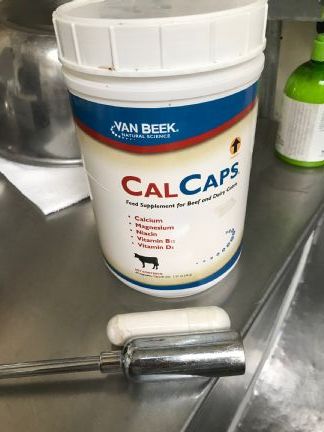
Because I know cows can be fickle and even more so right after calving, I'm going to offer my girls some options, thinking at least one of them has to work. I'm definitely going to try all three options prior to delivery to make sure all goes smoothly right after she gives birth and then again 12 hours later.
I'll let you know more once I get further along with my milk fever prevention testing. |
MaryJane Butters, author of Milk Cow Kitchen ~ striving for the stoicism of a cow standing in the rain ~ |
 |
|
|
NellieBelle
    
11220 Posts
|
 Posted - Aug 13 2018 : 2:17:19 PM Posted - Aug 13 2018 : 2:17:19 PM


|
| I will see if I can post a photo of the Transition balling gun for Jersey cow. The Transition bolus I purchased was dosage for Jersey cow also. Leedstone. http://www.leedstone.com/transition-balling-gun-2.html |
To laugh is human but to moo is bovine. Author Unknown |
Edited by - NellieBelle on Aug 13 2018 2:22:47 PM |
 |
|
|
maryjane
    
7076 Posts
|
 Posted - Aug 13 2018 : 5:20:16 PM Posted - Aug 13 2018 : 5:20:16 PM


|
| Thanks Janet! |
MaryJane Butters, author of Milk Cow Kitchen ~ striving for the stoicism of a cow standing in the rain ~ |
 |
|
|
NellieBelle
    
11220 Posts
|
 Posted - Aug 14 2018 : 03:05:44 AM Posted - Aug 14 2018 : 03:05:44 AM


|
| https://crystalcreeknatural.com/shop/dairy/saf-cal/ Saf-Cal Here is a drench by Crystal Creek, however I don't see any Vitamin D listed. 1 oz. per 100 pounds. |
To laugh is human but to moo is bovine. Author Unknown |
Edited by - NellieBelle on Aug 14 2018 03:07:56 AM |
 |
|
|
farmlife
    
1413 Posts
|
 Posted - Aug 14 2018 : 09:25:23 AM Posted - Aug 14 2018 : 09:25:23 AM


|
I'm so glad we have this topic. I will be much more preventative next time. MaryJane, you are so right about having options. It is so touchy right after calving we might not be able to just have one be all end all for every situation.
In light of that, when I got the liquid calcium from the vet she gave me two different kinds.
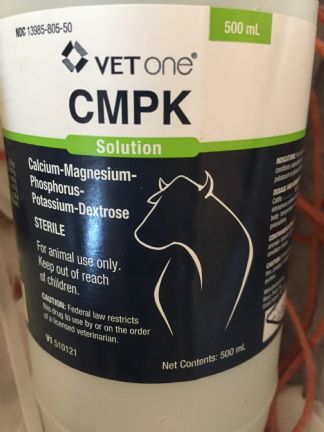
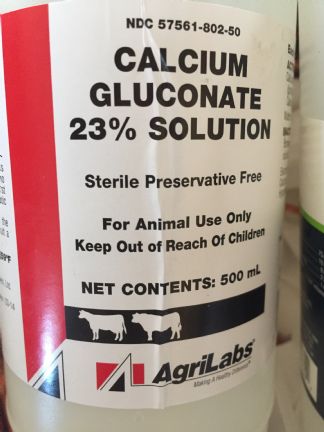
Elli got both and she was up within a few minutes. One had calcium, magnesium, phosphorus, potassium, and dextrose, and the other was calcium gluconate. It seemed to cover all the bases.
|
 |
|
|
maryjane
    
7076 Posts
|
 Posted - Mar 06 2019 : 08:19:16 AM Posted - Mar 06 2019 : 08:19:16 AM


|
Keeley, I've always assumed the two you used were administered via IV. Correct me if I'm wrong.
I have three calves coming the first part of April, so I thought I'd revisit this thread and decide what I'm going to use. After giving it some thought and trying a bolus on Miss Daisy (not at all successful), I decided to buy 9 bottles of Durvet CMPK drench because we were able to successfully administer Corid to everyone here using a 400ml drench gun. Unlike a paste or a bolus, everything "flowed" a little easier once I put the girls one by one in my squeeze chute. It worked well on my calves, also. For that matter, a good quality, stainless steel tubing bladder (used to give a calf colostrum) would work (actually tried it to make sure). I bought the Durvet bottles at StateLineTack.com
.jpg?v 69914677)
I can't for the life of me remember where I bought the drench gun I've been using. For a while I used one that Dr. Parish gave me, but then it broke so I bought this one and it's been a real work horse (Corid has to be administered in three separate doses a few days apart).
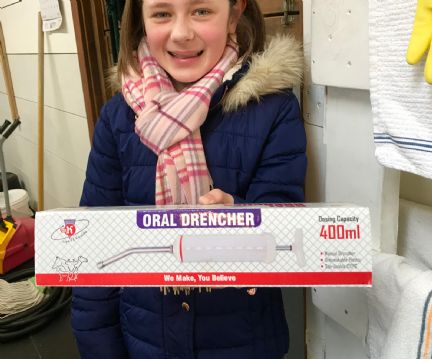


My plan is to make sure I can get one down all of them by giving them one when they seem close to delivery. Then again right after they calve, and then again 12 hours later.
|
MaryJane Butters, author of Milk Cow Kitchen ~ striving for the stoicism of a cow standing in the rain ~ |
 |
|
|
Topic |
|
|
|
![[flourish]](/images/flourish-txt_mobius.png)
![[flourish]](/images/flourish-txt_mobius.png)